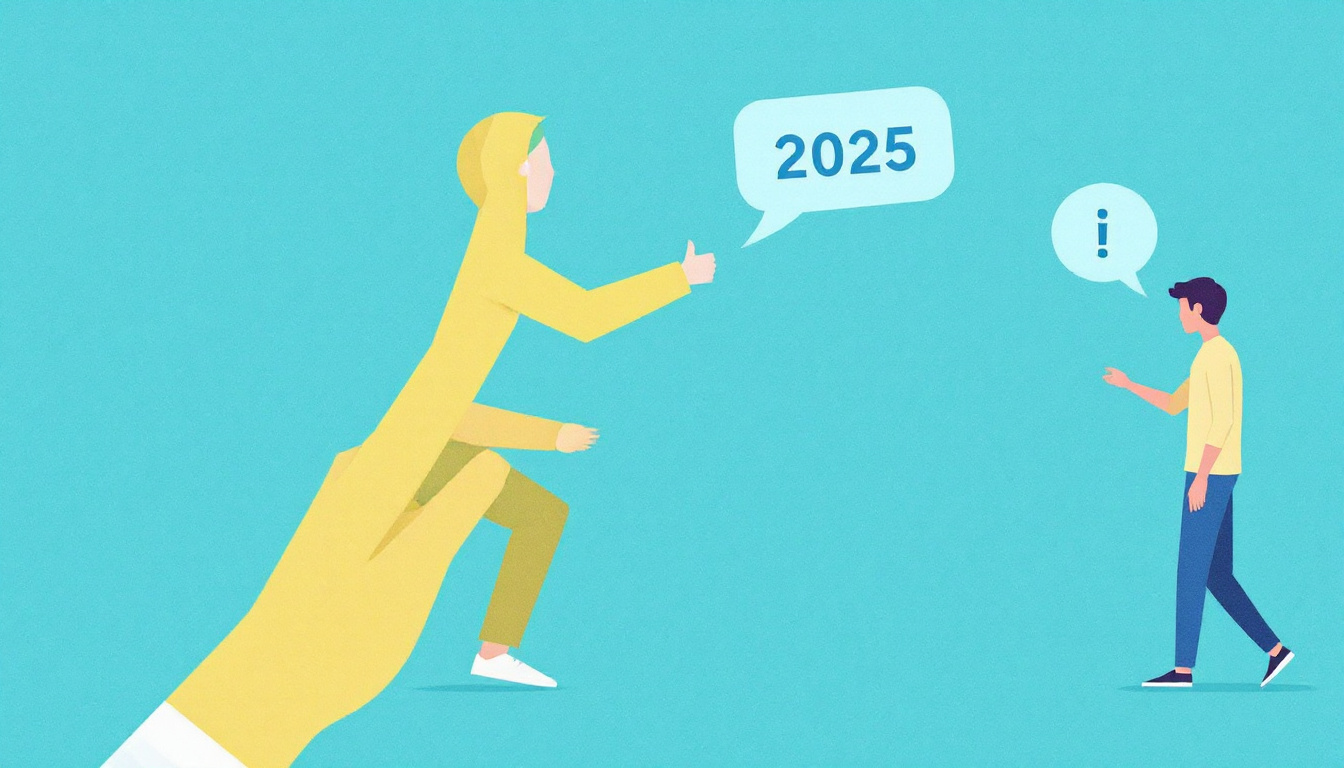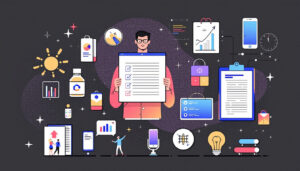Digital Product Accessibility in has become a fixed expectation for businesses, developers, and IT professionals across the digital industry. In 2025, regulations and user expectations are advancing, highlighting the importance of accessible experiences across platforms and devices. Meeting these standards is not only a legal requirement but an ethical obligation that promotes fairness and broadens market reach.
Companies face growing scrutiny as new accessibility standards take hold. The focus extends beyond compliance; accessible products now play a key role in user trust and business reputation. As the industry adapts to these demands, understanding the regulatory, technical, and human factors involved will be essential for any organization shaping the digital marketplace.
Key Accessibility Standards and Regulations for 2025
Digital accessibility is shaped both by international standards and evolving regional laws. As 2025 approaches, updates to guidelines such as WCAG 2.2 and new legislation across the United States, Europe, and other regions set clear expectations for those building and maintaining digital products. Staying current with these requirements reduces legal risk and improves product reach for all users.
WCAG 2.2 and What’s New for 2025
 Photo by Anna Shvets
Photo by Anna Shvets
The Web Content Accessibility Guidelines (WCAG) version 2.2 builds on previous versions and introduces new requirements for digital accessibility. Released to address persistent barriers, WCAG 2.2 now sets the pace for inclusive digital design in 2025.
Key updates in WCAG 2.2 include:
- Nine new success criteria focus on simplifying access, especially for users with cognitive and mobility challenges.
- Notable improvements are demanded for controls, navigation, and focus visibility.
- Strong focus on touch targets and error prevention, vital for mobile access.
For developers, WCAG 2.2 provides a practical checklist:
- Review new criteria for controls and interactions.
- Test the visibility of focus indicators.
- Check that all interface elements are easy to reach and understand across devices.
The full summary of changes and practical steps for application can be found through the Web Accessibility Initiative’s overview of what’s new in WCAG 2.2.
Government and Regional Accessibility Laws
Regulation of digital accessibility is more detailed than ever, with varied rules across regions driving higher standards globally.
United States:
- Public websites and digital tools for federal programs must meet Section 508 of the Rehabilitation Act.
- Recent Department of Justice clarifications mean websites of public businesses face stronger ADA requirements. The focus is on websites, apps, and self-service kiosks.
European Union:
- The European Accessibility Act (EAA) becomes enforceable in June 2025.
- EAA harmonizes digital accessibility obligations across the EU, affecting web, mobile, e-commerce, and hardware products for both public and private markets.
- This impacts any business offering products or services in the EU, regardless of headquarters location.
Other Regions:
- Many national standards now model WCAG. Countries in Asia-Pacific, South America, and the Middle East are formalizing similar requirements.
For a closer look at the EAA and steps to prepare for compliance, review this summary from the Accessible EU Centre.
Industry Best Practices Beyond Compliance
Leading companies view accessibility as more than just a legal matter. By exceeding baseline standards, they set their products apart, foster innovation, and build trust with a broader user base.
Benefits of surpassing compliance include:
- Improved usability and satisfaction for everyone, not just those with disabilities.
- Smoother interface performance and clearer content.
- Stronger alignment with consumer expectations for ethical technology.
Teams that draw insight from user research are more flexible in adapting to trends. This forward-thinking approach to accessibility is highlighted in the latest consumer trends and design insights—showcasing how accessibility and product design now move hand in hand.
You do not just address current rules; you prepare for evolving needs, future-proofing your business as expectations shift.
Understanding and Meeting Diverse User Needs
Digital products reach people of all ages and abilities. For many, accessible technology is a gateway to essential information, work, and social life. Meeting different user needs means more than just following rules—it means giving every user a fair and usable digital experience.
User Personas: Addressing a Spectrum of Abilities
Accessible design starts by recognizing real individuals behind the screen. User personas represent typical groups or individuals who use a product. When tailored for accessibility, these personas give product teams deeper insight into how users with varied abilities interact with digital tools.
To create inclusive personas:
- Include physical (mobility, vision, hearing), cognitive, and situational impairments (like bright sun affecting screen visibility).
- Capture technology preference, assistive device use, and environment.
- Consult real users with disabilities to verify needs and pain points.
By broadening personas to reflect disability and aging, teams avoid designing for a “typical” user and instead consider edge cases as part of mainstream development. This drives solutions that work for everyone, not just a fraction of users.
Inclusive Design for Real-World Use Cases
 Photo by Mikhail Nilov
Photo by Mikhail Nilov
Accessible design in action meets needs across a diverse population. For example:
- Text-to-speech functions give blind or low-vision users full access to written content.
- Keyboard navigation helps those who cannot use a mouse or depend on custom input devices.
- High-contrast modes and scalable fonts improve usability for aging users or people in bright environments.
- Clear instructions and flexible error handling support cognitive accessibility.
These practices not only help people with permanent disabilities but also benefit users experiencing temporary barriers—like a broken arm, loud commuting environment, or a slow internet connection. Products designed with these scenarios in mind provide smoother, more predictable experiences for every user. For a deeper look at digital product design methods that deliver universal improvements, review consumer trends and design insights.
Business Advantages of Prioritizing Accessibility
Accessible products offer measurable business returns. Organizations that prioritize accessibility see benefits including:
- Entry to new markets: Products that work for older adults, users with disabilities, or low-bandwidth regions expand the customer base.
- Improved customer satisfaction: Easier interfaces and more inclusive experiences lead to higher retention and positive word-of-mouth.
- Mitigation of legal risks: Compliance with standards and laws reduces exposure to lawsuits and regulatory action.
- Stronger brand reputation: Accessible products demonstrate social responsibility and build trust across broad demographics.
Investing in accessibility is not just about risk reduction—it boosts innovation and market reach. The financial case is well supported in recent studies, such as Deloitte’s analysis on the value of accessible business design, which shows a positive relationship between accessible practices and business performance.
Implementing Accessibility in Digital Product Development
Integrating accessibility across digital product lifecycles is now a standard practice. The expectation in 2025 is that teams embed accessibility principles from concept to deployment. This proactive approach requires coordinated action, clear processes, and dedicated resources. By focusing on workflows, fostering collaboration, and leveraging modern tools, organizations can deliver inclusive digital experiences that meet both user needs and regulatory standards.
Integrating Accessibility into Design and Development Workflows
 Photo by Mikhail Nilov
Photo by Mikhail Nilov
Teams adapting agile and DevOps practices can integrate accessibility checks throughout the development cycle. Start with accessibility requirements during the planning stage, ensuring every user story or requirement connects to specific accessibility criteria. Key steps include:
- Design Phase: Use accessible color schemes, scalable typography, and clear layouts. Design wireframes should factor in screen reader compatibility and keyboard navigation.
- Development Phase: Code with semantic HTML and ARIA attributes. Leverage pre-commit hooks for linting accessibility issues.
- Testing and Review: Incorporate automated accessibility testing tools into the CI/CD pipeline. Schedule regular manual audits for complex interactions. Use roles and assistive technology in test coverage.
- Deployment and Maintenance: Monitor live applications with analytics and user feedback to identify real-world accessibility gaps. Plan for periodic re-evaluation as standards or technologies update.
Automation streamlines this process, but manual checks remain necessary for nuanced issues. Studies suggest successful teams combine tools with regular human review to address both common and unique challenges. More guidance on adapting workflows is available through resources on accessibility and the future of UX.
Collaboration: Building an Accessibility-First Culture
Driving sustained accessibility requires shared ownership across disciplines. Cross-functional teams—design, development, quality assurance, business stakeholders—must all participate.
Strategies for building an accessibility-first culture:
- Education: Provide ongoing training on standards, inclusive design, and assistive technologies.
- Dedicated Roles: Assign accessibility champions or coordinators in every major team.
- Communication: Foster open channels between teams to share obstacles, findings, and solutions.
- Feedback Mechanisms: Establish ways for users and internal staff to report accessibility issues.
- Recognition: Celebrate accessibility milestones and contributions at both the product and individual level.
Documenting standards and lessons learned across teams accelerates organization-wide progress. Feedback from customers and testers with disabilities helps bridge gaps left by automated tools. Early engagement with accessibility experts in product scoping enhances success rates, especially on legacy upgrades or system rewrites. For more on regulatory implications affecting teams in 2025, consult developer guidance for the EU Accessibility Act.
Tools and Resources to Enhance Accessibility
Selecting the right tools and resources can transform accessibility from a hurdle to a routine part of product creation. Automated checkers, browser extensions, and integrated testing platforms are now standard in modern workflows.
Recommended categories of accessibility tools:
- Automated Testing: Tools such as axe, Lighthouse, and WAVE spot violations early and integrate with CI/CD pipelines.
- Design Platforms: Figma and Adobe XD offer plugins to simulate color blindness, evaluate contrast, and annotate accessibility in prototypes.
- Content & eBook Creation: For teams creating digital publications, platforms highlighted in the Top Tools for Ebook Creation in 2025 demonstrate how accessibility features can be built into the workflow, such as automated alt text generation and compatibility validation for devices.
- Browser Extensions: Tools like Accessibility Insights help spot-check issues on live sites during manual testing.
- Community and Training: WebAIM, MDN Web Docs, and industry-focused accessibility blogs provide current best practices and code examples.
Integrating these resources strengthens every stage, from design sprints to regression testing. Companies investing in tool-driven automation supported by targeted manual review are better positioned to keep pace with accessibility standards while meeting user expectations.
Future Trends: The Evolution of Digital Accessibility
The digital accessibility landscape is shifting rapidly, shaped by new technologies that promise both greater efficiency and more personalized user experiences. In 2025 and beyond, AI, automation, and adaptive technologies are transforming how businesses address accessibility in digital products. Understanding these advancements is key for anyone seeking solutions that not only comply with standards but also support the individuality of every user.
AI and Automation in Accessibility
 Photo by Tima Miroshnichenko
Photo by Tima Miroshnichenko
Artificial intelligence is now integral to accessibility testing and enhancement. Automated tools, driven by AI, can uncover issues that manual reviews might miss. Intelligent guided tests, powered by machine learning, analyze user flows and highlight gaps in accessibility, making audits faster and more reliable.
Key developments in this area include:
- AI-assisted testing frameworks: Platforms offer automated rule-checking for contrast, navigation, and text alternatives.
- Code suggestions: Machine learning models propose real-time improvements during development, reducing manual rework.
- Continuous monitoring: Algorithms scan live products and flag issues as user interfaces update or change.
Investment in these technologies accelerates development cycles and helps products maintain compliance as interfaces grow and change. For a deeper perspective on where AI is headed in accessibility workflows, review the innovations described in the next leap in digital accessibility. Teams exploring automation trends will also benefit from understanding the top automation testing trends shaping 2025.
Personalization and Adaptive Technologies
Personalization and adaptive technology are stepping beyond simple “one size fits all” solutions. Today’s accessibility tools can sense individual needs and adapt digital experiences in real time.
Recent advancements include:
- Context-aware interfaces: Digital products now adjust layout, color, and text size in response to the user’s assistive devices, preferences, and context.
- Integrated AI assistants: Instead of relying solely on standalone apps, users benefit from adaptive agents. These tools support navigation, read content aloud, and help with complex tasks across multiple platforms.
- Healthcare and telemedicine: New adaptive solutions deliver individualized support for patients, integrating accessibility with telehealth appointments and remote care management.
Businesses adopting adaptive tech can reach a larger audience. Systems that personalize based on real user behavior drive higher engagement and usability for everyone. For more insight into these trends, the article on the future of assistive technology offers a practical overview of integrated AI experiences. The 2025 trends in healthcare technology reveal how these solutions benefit sectors like telemedicine, creating pathways to better accessibility and personalization.
For additional strategies and industry-specific applications, explore more about consumer trends and product design as these innovations continue to shape user-centric digital accessibility.
Conclusion
Pressure to meet rising accessibility standards carries direct business consequences. Digital products that prioritize fair access attract stronger loyalty, reduce legal exposure, and open doors to wider markets. The shift in 2025 reflects not only compliance with laws, but a lasting commitment to user-centered design as a driver of trust.
IT professionals, developers, and business leaders should treat accessibility as a continuous process, not a single milestone. Staying proactive with updated standards and inclusive practices strengthens both product value and corporate reputation.
Adopt an ongoing approach to accessibility improvement—embed it in every project, every team, and every update. This commitment delivers lasting results in performance, satisfaction, and compliance. Thank you for your attention; share your strategies or challenges in the journey toward better accessible products.





![Declassified CIA Files: Chronological Overview of Soviet Military UFO Clashes [2025 Updated]](https://thespartane.com/wp-content/uploads/2025/05/cold-war-soviet-ufo-cia-files-desk-300x171.jpg)
![Cloud-Based Digital Products Security Considerations for 2025 [Updated]](https://thespartane.com/wp-content/uploads/2025/05/futuristic-cloud-security-control-center-2025-300x171.jpg)


![Practical Strategies for Monetizing SaaS Tools in 2025 [Updated]](https://thespartane.com/wp-content/uploads/2025/04/futuristic-digital-workspace-saas-strategy-300x171.jpg)